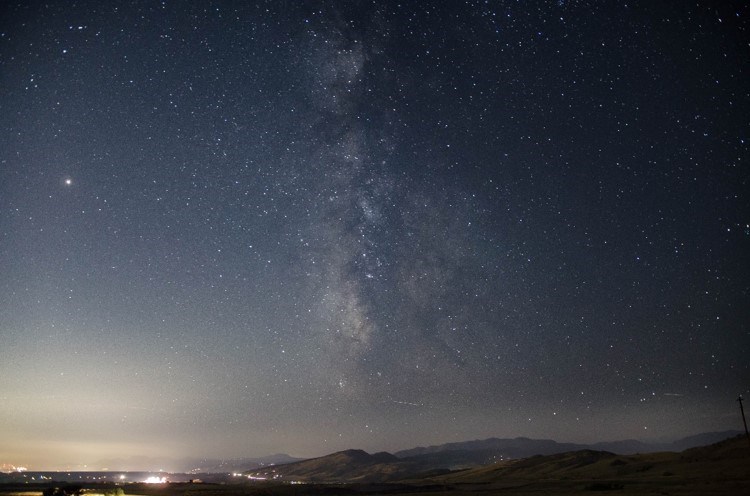Typically held in April during the week of the new moon, International Dark Sky Week is more than an appreciation of stargazing for astronomers and astrophotographers. The broader goal is to bring awareness to the issues of light pollution and its impacts on human and wildlife populations.
April 5 - 12 is International Dark Sky Week, and Boulder County Parks & Open Space have partnered with Longmont Astronomical Society to share information with local residents on the importance of dark skies and the hazards of light pollution.
In years prior, International Dark Sky Week would be celebrated with educational star parties hosted by Boulder County and Longmont Astronomical Society at one of the county’s open space properties like Mud Lake or the Ron Stewart Preserve at Rabbit Mountain. With restrictions on gatherings and concerns for public safety during the ongoing COVID-19 pandemic, the partnership has taken a more informational approach.
Interested residents can sign up on Boulder County’s website for emails through April 9. Prior emails — hosted on the website — contain facts on stargazing, constellations and other celestial bodies seen in the skies above, as well as information on light pollution and how it can be mitigated at an individual level.
The star parties of previous years would involve a brief lesson on astronomy, followed by opportunities to view the stars through telescopes provided by Longmont Astronomical Society. Deborah Price, the Natural History Program coordinator for Boulder County, hopes that some small gatherings can resume in May without telescopes.
For enthusiastic astronomers that still want to get out and appreciate the celestial splendor on their own, Longmont Astronomical Society’s President Stephen Garretson recommends getting out of the city.
“Longmont is in a red zone, so you need to get away from town. Probably the easiest plan is to find a wide country road somewhere out of town where you can pull to the side,” Garretson said in an email.Public parks and county open spaces typically close to the public at dusk, to minimize risk to local wildlife. Garretson recommended using a light pollution map like Dark Site Finder or Clear Dark Sky and setting the pollution representation to 50% to get an idea of the best places to go.
“If you have the time to camp overnight in a state or national forest campground, be sure to find one that has good sky access, not one that’s heavily forested,” Garretson said.
In lieu of county-sponsored gatherings, Price had similar recommendations. “Stargazers should drive up Colo. 7 — the Peak to Peak Scenic Byway. There are a number of pull-outs that are safe to park and very minimal light pollution at that elevation.”
Light pollution, aside from interfering with the ability to see stars, can cause complications with wildlife migrations and even human health, according to the International Dark Sky Association. Artificial lighting can affect natural circadian rhythms, and outdoor lighting can be disruptive and wasteful. The introduction of shielded lights aimed at the ground can aid light concentration without dispersing it out or up to the sky.
“Simple things like changing the lighting on the outside of the house and turning off unnecessary lights indoors can help reduce local light pollution. Softer, warmer lighting indoors and out can provide normal lighting without the harsh and disruptive effects,” Price said.
Though the annual dark sky study was delayed from 2020 due to concerns with the ongoing pandemic, the study will continue in August of 2021. The last study in 2019 showed Mud Lake and Caribou Ranch near Nederland as the two darkest sites, with Ron Stewart Preserve joining the list as well, comparable to Trail Ridge Road in Rocky Mountain National Park.
Those looking for a more guided experience are invited to sign up for the daily emails from Boulder County. Longmont Astronomical Society’s in-person star parties are still delayed until some time in the future when the group can ensure they are done safely.
“Currently we’re developing the ability to conduct virtual star parties, but there’s still a good deal of work to be done on the project so it’s a ways off,” Garretson said.



